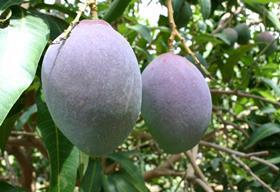
Japan’s fresh produce market experienced significant disruption in the aftermath of the earthquake and tsunami on 11 March, according to the latest Japan Fruit Market Report from Tokyo-based agricultural consulting company Yamano & Associates.
Japan’s total fruit import volumes reached 255,155 tonnes during March, up 11.2 per cent on the same month last year, according to the report.
The growth was aided by a strong yen, which surged in value in the wake of the devastating events as Japan repatriated its funds from international markets, before the G7 intervened to correct the currency’s appreciation.
Japanese retailers also increased their demand for imported fruits in the wake of the earthquake and tsunami, which significantly impacted on domestic supplies and distribution.
Movement of produce in Tokyo, be it imported or domestically-grown, was heavily disrupted, the report said, and prices of key domestic items climbed as stocks ran short. “Shipping of apples from Aomori Prefecture decreased and overall Fuji apple supply ran short, so prices were higher as a result of the decrease in stock,” said the report. “The price of domestic citrus appeared to hit a peak.'
Another major factor in sales of domestically-grown produce was the news of radioactive contamination to farm produce grown in the areas surrounding the Fukushima Daiichi nuclear plant, which was badly damaged by the earthquake and tsunami. “This caused conservative buying of agricultural commodities,” the report observed.
Banana sales steered one of the steadiest courses in the aftermath of the quake, with sales for March reaching 90,749 tonnes, only 1.1 per cent down on the same month of last year. “The quoting price remained steady for both the Philippines and Ecuador and the quality was favourable,” the report said.
In the grapefruit market, meanwhile, Japan's second-largest fruit import category, volumes fell 6.7 per cent year-on-year to 29,060 tonnes, but Yamano & Associates predicted increase demand from the food service sector. “Importers remained cautious about the 11 March earthquake and the impact of the electrical power failures, and they tried to increase import volumes while evaluating the state of the growing regions for domestic produce,” the report noted.
Elsewhere on citrus, orange imports for March saw an impressive 21.8 per cent increase on the same month last year, reaching 16,884 tonnes. Yamano & Associates attributed the growth to this year’s small domestic citrus harvest, which saw volumes recede. “There were strong inquiries for large-sized imported oranges in particular, especially the count 72s,” said the report.
Pineapple imports were another product to clock up significant volume growth in March. Imports from the Philippines, the primary supply source, reached 13,732 tonnes, with average prices recording a modest increase from 25 March.
Sales of some imported fruits suffered in the wake of the earthquake, however. While imports of mangoes during March grew 34 per cent on the same month last year to reach almost 980 tonnes, sales were badly affected. “The season is usually full-blown at this time but the earthquake made trade very difficult,” said Yamano & Associates. “Mangoes are not regarded as a must-have item and being a delicate and perishable product, buyers were wary about handling them.”
The earthquake also had a negative impact on movement of avocados, whose imports fell by almost 16 per cent compared with March last year, weighing in at 2,316 tonnes. Virtually all that product came from Mexico, and higher prices in the growing regions coupled with more rigorous domestic inspection procedures also affected sales. “The market prices rose compared with last year, and importers became more cautious and nervous,” said the report.






No comments yet